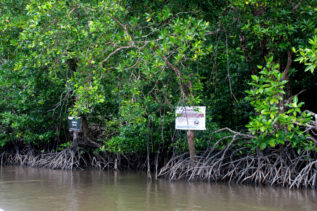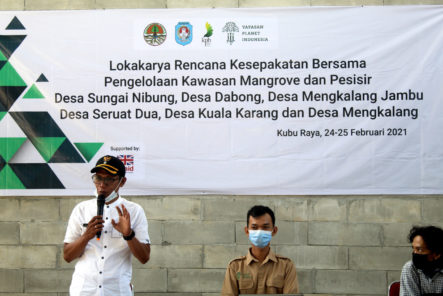This post is also available in:
 Indonesian
Indonesian
By Budi Susanto (Kubu Raya Site Leader, Yayasan Pesisir Lestari) and Lia Syafitri (Communication and Outreach Coordinator, Planet Indonesia)
“If we let go of the small crab, the small crab will just be taken by someone else later, so isn’t it pointless?”
For the mud crab fishing communities in Indonesia’s Kubu Raya regency, sustainable fishing hasn’t always made sense. Many believed that individual efforts, like releasing smaller crabs back into the water, would simply be overridden by someone else’s actions. But over time, this mindset has changed. With support from Planet Indonesia, assisted by Blue Ventures in partnership with Yayasan Pesisir Lestari, communities across Kubu Raya are now driving sustainable mud crab fisheries management, protecting both their mangrove forests and their future.
Planet Indonesia develops partnerships with communities and village governments in order to encourage nature conservation for Indonesia’s most vulnerable ecosystems. The coastal area of Kubu Raya, which is also known as the Seruat Pulau Tiga landscapes, is one of the locations where the organisation works. The region consists of six villages: Sungai Nibung, Dabong, Mengkalang Jambu, Seruat Dua, Kuala Karang, and Mengkalang.
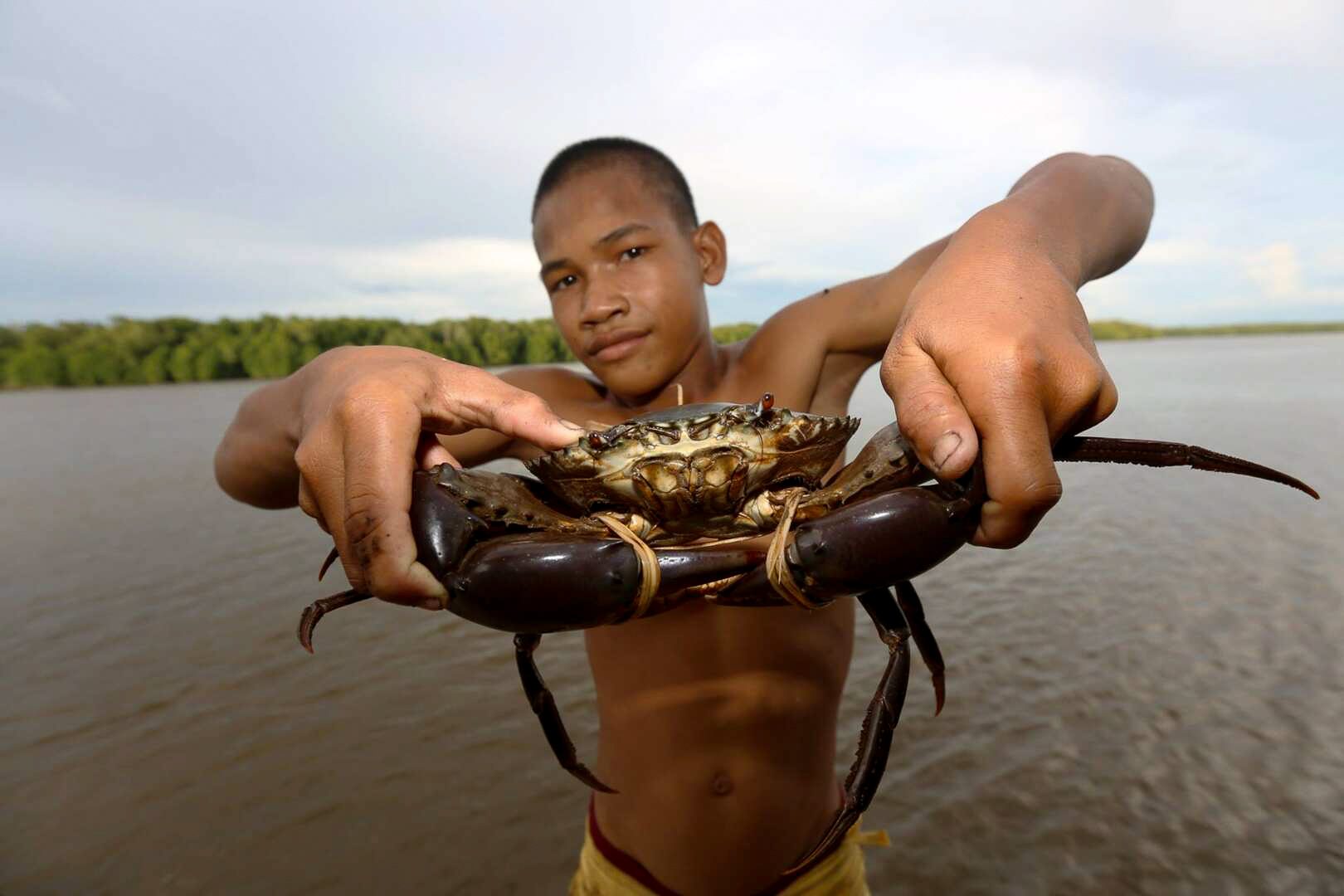
Mud crabs live amongst Kubu Raya’s mangroves and are a popular source of protein for people and wildlife alike | Photo: Planet Indonesia
One of the species living in the waters of Kubu Raya’s mangrove forest is mud crab, which is a primary source of income for fishers here.
Kubu Raya is home to carbon-rich mangrove forests, which provide important services to both people and nature including coastal protection, carbon storage and fisheries. Mangroves are critical habitats for fishery resources because they function as nurseries, provide a food source, and offer reproduction areas. One of the species living in the waters of Kubu Raya’s mangrove forest is mud crab, which are a primary source of income for fishers here. In the absence of mangroves, the species would be in jeopardy, so protecting the forest means protecting their livelihood.
Temporary fishery closures for mud crab
In 2016, the Indonesian government regulated that mud crabs must be more than 200 grams when caught and also must not be caught if they are laying eggs so that stocks can replenish at a natural rate. For the fishers in Kubu Raya, following these simple steps towards sustainability has inspired further community conservation action.
Since 2019, four villages in Kubu Raya have been managing their mud crab fisheries and protecting their forest through temporary fishery closures across a total of 6,519 hectares of mangroves. For three months at a time, the communities prohibit mud crab fishing in specific areas of the river and then harvest them once the location reopens to give the mud crab enough time to grow to maturity.
For me, the closure system is a way for us to increase fishers’ yields and to keep our forest safe from illegal loggers. It is because of the closure system that our profits are increasing. Small crabs can be bigger and older ones can grow a little older, so that yields will increase.”
Pak Rusli is a seasoned fisher from Seruat Dua village who supports the temporary fishery closures.
Previously, fishers complained about the reduced catch. But now, the catch is not bad. We used to catch crabs here, but only got 7-8 kilogram catches. But now, each person can get a few dozen pounds per day [around 16-17 kilograms]. More than that, we can get crabs in the big A size!” he added.
Mud crabs are a fast-growing invertebrate species, and ‘A size’ is the largest size categorisation, referring to crabs that weigh between 250 grams and 1 kilogram. With crabs of this weight being caught in Kubu Raya, it’s a sure sign that allowing the crabs to thrive during a temporary closure period is an effective way to sustain the fishery. As Park Rusli says, “In my opinion, this closure system is a success!”.
Strengthening community-led forest management
Managing mud crab fisheries is an important part of sustainable mangrove forest management. According to government regulation, communities can use mangrove forests to support their way of life, for example, for fuelwood and fisheries. This also means that the communities themselves are required to manage the forest in a sustainable way so that they can continue benefiting long into the future.
Since 2019, all six communities in Kubu Raya have been working to strengthen the Lembaga Pengelola Hutan Desa (LPHD) of each village. LPHDs are forest management institutions that exist to protect and conserve each village’s area of mangrove forest.
One of the ways the communities are engaging in mangrove management is by monitoring the managed area on a regular basis during regional patrol activities using Spatial Monitoring and Reporting Tool (SMART) Patrol. This is a tool that helps communities measure, evaluate, and improve the effectiveness of their local protection and law enforcement through site-based conservation activities. They use this application to carry out monitoring and location-based reporting.
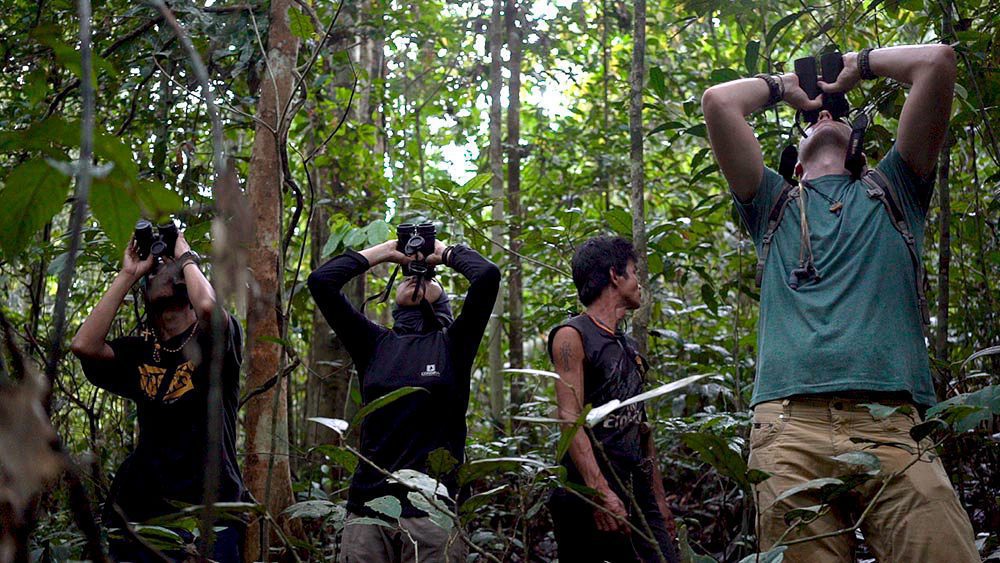
Community members carrying out SMART Patrols in the mangrove forest | Photo: Planet Indonesia
So far, a series of SMART Patrol activities have been carried out to conduct surveillance patrols in the mangrove forest. Through this SMART Patrol activity, the communities are able to report findings, including mud crab fishing violations during closures, as well as monitor encounters with protected animals, such as the bekantan (proboscis monkey). The findings of SMART Patrol activities are then used to quickly analyse the density of animals and human activity in the forest.
The journey to establish a locally managed marine area (LMMA) in Kubu Raya
United we stand, divided we fall.”
Following this proverb, the communities in Kubu Raya recently decided to come together to discuss how to collaborate on protecting their precious mangrove forests.
In February 2021, the community in Mengkalang Jambu community hosted a workshop to initiate a joint agreement plan for the management of mangrove and coastal areas in all six villages of Kubu Raya. Fishers, village governments, conservation cooperatives and village forest managers expressed their commitment to managing the mangrove areas together.
It’s great that we can commit to create a joint village regulation between these six villages, to protect our mangroves and mud crab fisheries. I’m happy that all the village leaders also share this dream to protect and preserve our natural resources that we borrow. Let’s benefit from this nature, but protect it at the same time,” – Agustar, village head of Mengkalang Jambu.
Zoning is when the marine area is divided into different parts, such as permanent no-take zones (permanent fishery reserves) and sustainable fisheries zones (areas where temporary fishery closures are held periodically).
“Through this workshop, we have agreed on a draft of joint village regulations on zoning management in the six villages,” explained Miftah Zam Achid, Community Empowerment Manager of Planet Indonesia. Zoning is when the marine area is divided into different parts, such as permanent no-take zones (permanent fishery reserves) and sustainable fisheries zones (areas where temporary fishery closures are held periodically).
“Planet Indonesia conducted spatial analysis to generate baseline data to recommend zoning areas across the six villages, which also consider the government’s zoning of coastal conservation areas and small islands of Kubu Raya regency,” Miftah added.
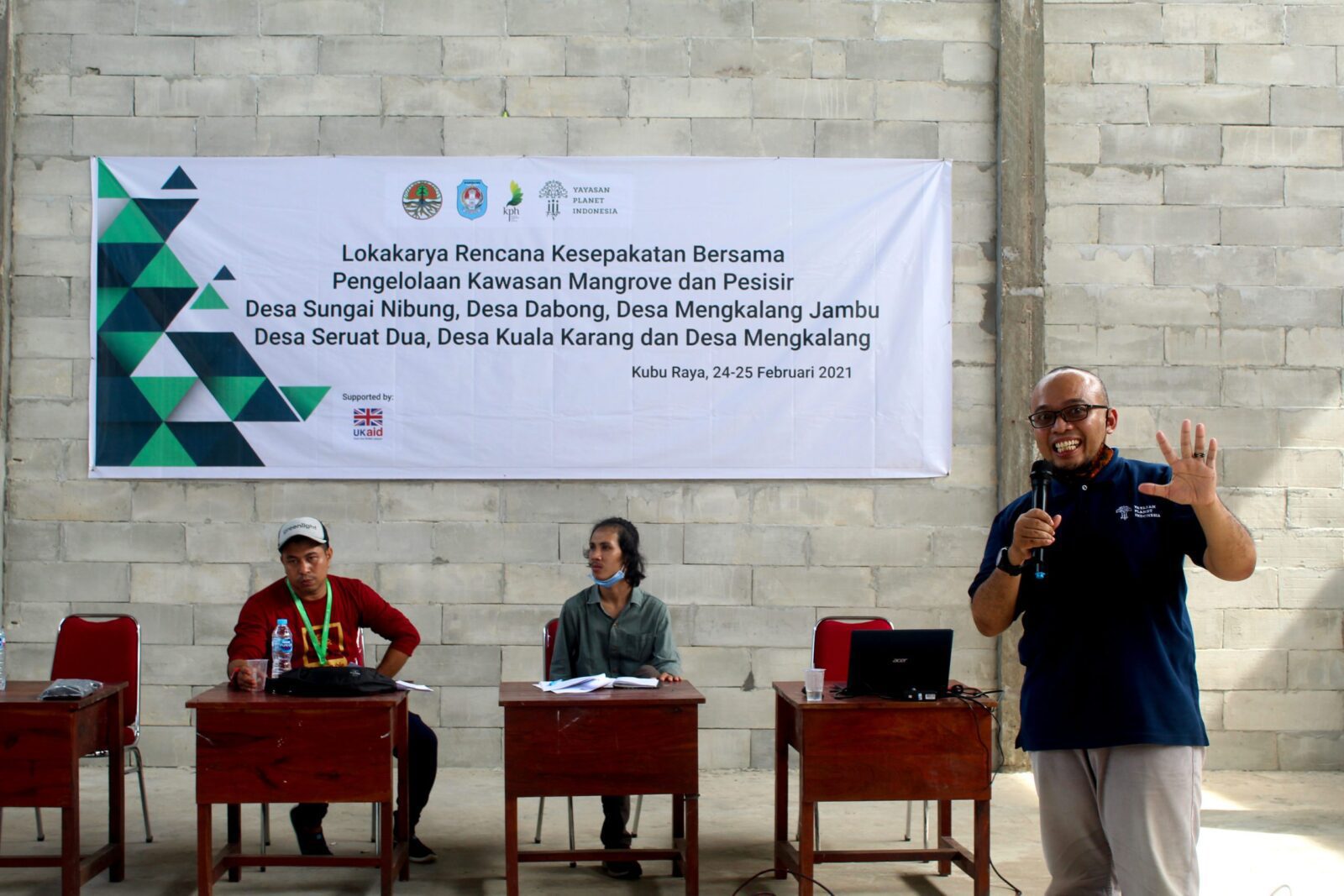
Miftah, Community Empowerment Manager from Planet Indonesia spoke about zoning management | Photo: Planet Indonesia
In addition to zoning management, the communities also made an agreement on the use of sustainable fishing gear for their mud crab fishery.
The temporary fisheries closures and SMART Patrols were the first step towards establishing an LMMA in the coastal region of Kubu Raya. The joint village regulation, once it’s issued and officially published, will be another important milestone for the communities to take the lead in managing their natural resources sustainably.
Learn more about Planet Indonesia
Find out about the progress of the community-led temporary fishery closures in Kubu Raya



